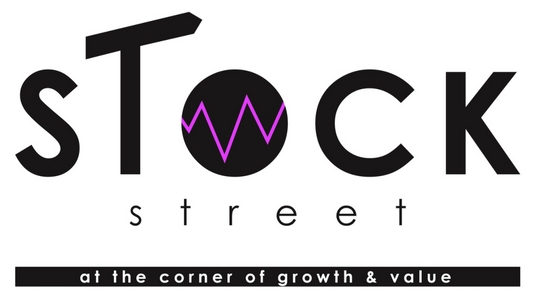The biggest mistake you will make is picking a bunch of random stocks for the sake of having a diversified portfolio. This page shows you what you should do instead.
Link to my portfolio is at the bottom of the page
If you are a beginner investor or a seasoned investor, I would love for you to join my Free Facebook Group! You can click here to join my group – Stock Market Investment Beginners and Gurus.
How to Build a Stock Portfolio the Right Way
Look, I know why you are here. You are curios because this page has some very personal and intriguing information inside it: it tells you how I invest my money. I know you are like a little kid on Christmas right now about to open a big present, but I would suggest that you step back for a moment. I want you to read ALL of the words between this paragraph, and the bottom of the page where my stock portfolio link is located.
I know this is a lot to ask in our modern day society of speed and hyperactivity, but the entire point of this page is to show you how you should build your portfolio using PATIENCE. So, please, for the love of Warren Buffett, have a little patience and read the page 🙂
How to Create Your Stock Portfolio
You may not want to pick stocks in the first place
The first thing you should realize is you may not even want to pick stocks. Everyone thinks stocks are sexy beasts (said in an Austin Powers accent), but they are not for everyone. You should, however, have money invested in the stock market. For some people, merely having an index fund which tracks the S&P 500 is completely fine. You very well may do much better investing in an index fund. Index investing is the passive way to invest, and I am all for that route if you are not the type to analyze stocks. So don’t feel that you need to build out a stock portfolio and be an active investor when you can always just invest in an index and be a passive investor.
My Stock Portfolio Build Out Journey
Here is something interesting about me. I was in the financial services industry for about 7 years without purchasing a single individual stock. I had money in the stock market via funds, but I had no money invested in individual stocks. Honestly, I didn’t even know where to begin when it came to valuating an individual stock. To me, purchasing a stock is not something you should do lightly.
Here is something I wrote as a Quora answer that sums up how I came to finally understand stock investing:
I once took a long needed vacation to the Philippines. Before I left, I rented a book from my public library (I know, old school). That book was called “The Intelligent Investor”. As I was on my 24+ hour journey to Southeast Asia, I started reading my twenty-something-year-old musty library book.I had been in the financial services world for about 5 years at the time, and I realized that I wasn’t completely grasping Benjamin Graham’s idea of value investing. I started thinking to myself, “If I’ve been doing this for five years and I’m not grasping this supposed classic book, am I some type of idiot?”
When I returned home I decided I would read a different book on value investing; this one a little less “thick”. So I picked up, “The Little Book of Value Investing”, by Christopher H. Browne. I started realizing the power of value investing as I turned those pages.
Over the subsequent year I read about five books on value investing. Almost exactly a year later, I decided to take another trip to the Philippines; I had to give “The Intelligent Investor” another try during my trip. As I made my way through my Philippine adventure I finally realized the genius of Benjamin Graham. And I have to say that the best advice I have ever been given was through Mr. Graham in his timeless book.
That advice: ALWAYS invest with a margin of safety.
This seems trivial, yet it is so complex. The reason this is such a complex idea is because you have to actually make a judgement about what the value of a company is. That is exactly what I had been missing my whole life up to that point working in finance. I was thinking about investing all wrong. So I decided to learn how to put a value on companies, and my “investment life” hasn’t been the same since.
After about a year of reading, I was much more confident in my approach to investing. Reading the right books on investing helps build knowledge, and knowledge helps you gain confidence. If you have both patience and confidence in investing, you will have two tools most people wish they had.
Read Before you Invest
If I were to do this all over again, these are the books I would read during my first year in chronological order (Amazon links included 😉 )
- The Little Book of Value Investing, by Christopher H. Browne – The Little Book of Value Investing
- The Little Book that Beats the Market, by Joel Greenblatt –The Little Book That Still Beats the Market
- The Warren Buffett Portfolio, by Mary Buffett & David Clarke The Warren Buffett Stock Portfolio
- You Can be a Stock Market Genius, by Joel Greenblatt –You Can Be a Stock Market Genius
- The Intelligent Investor, by Benjamin Graham – The Intelligent Investor
- The Little Book of Value Investing, by Christopher H. Browne – The Little Book of Value Investing
These are all great books I have read and love. For someone unfamiliar with investing, I highly suggest starting with The Little Book of Value Investing. It is really a simple book, which is what I personally needed to finally get value investing to click in my head. Each of these books will help you build your knowledge until you are ready to tackle the most classic investment book written, The Intelligent Investor.
(Thanks to my friend, Josh, who let me borrow so many investment books from his library!)
Diversified Risk
Let’s start by defining systemic and unsystemic risk:
Systemic risk is defined as risk that cannot be diversified out of a portfolio by adding positions. Another name for systemic risk is market risk. Investing in and of itself holds certain market risk, and diversification cannot reduce that risk.
Unsystemic risk is defined as risk that can be diversified out of a portfolio. An example of unsystemic risk can be seen through recent oil price fluctuations and the effect on nearly all companies in that sector. If you were 100% invested in only this sector, you will have much more risk than if only a portion of your money was invested in this sector.
If you want to read more, here is an article on Investopedia
Diversifying Unsystemic Risk
You probably need less stocks than you think in order to diversify yourself enough to avoid most unsystemic risk.
This article from Morningstar touches on how many stocks are needed to diversify risk – article
Here is a little excerpt from the article:
In their book Investment Analysis and Portfolio Management, Frank Reilly and Keith Brown reported that in one set of studies for randomly selected stocks, “…about 90% of the maximum benefit of diversification was derived from portfolios of 12 to 18 stocks.” In other words, if you own about 12 to 18 stocks, you have obtained more than 90% of the benefits of diversification, assuming you own an equally weighted portfolio.
If you can diversify most unsystemic risk out of your stock portfolio with less than 20 stocks, why do people have 100+ stock porftoflios? That, my friends, is a great question. It is a question I really don’t have an answer to, other than my view that overdiversification can have its own problems.
One thing I can’t stress enough is that you CANNOT keep track of 100 companies and understand them intimately without investing as a fulltime job. Even if you did this fulltime, I still do not believe many people can understand that many companies to the degree they need to. This brings us to a very important point: having less stocks allows you to know those companies better.
Having too many stocks hurts you more than it helps you, which is why I am fine with owning a portfolio with around 20 stocks.
How to be Patient
While having 20 stocks should be fine, it is a very bad idea to be extremely concentrated. For example, only having five stocks will create way too much risk.
Now we have a problem. How do you get from zero stocks to twenty stocks without:
- Having an extremely concentrated portfolio with only a few stocks.
- Being able to do the research needed to find the right companies.
- Missing out on stock market gains as you build out your portfolio.
The answer is to have a core fund as you build out your portfolio.
Core Fund Portfolio Buildout
In order to buildout your stock portfolio patiently, you can use a core fund that invests in the market so you don’t miss future gains. This way, you can work at your own speed as you slowly transfer monies from your core fund to your stock purchases.
For example, when you start, you may have 100% of your money in a low cost Vanguard S&P 500 Index Fund. As time goes on, you can slowly sell your positions in your index fund and purchase positions in the stocks you find. Depending on how much work you do, this strategy may take a few years to build out your stock portfolio if you don’t have much time to allocate to research. The great thing about this is you will still be invested during this time since your money is in an index fund anyway.
Tools to Use
The following are some websites and tools you may want to look into signing up for to help you with your research.
- GuruFocus: I have been using GuruFocus for a few years now and I love the website. There are so many unique tools you can use, such as their Buffett-Munger Screener, Peter Lynch Screener etc… They also have premium services you can signup for to help you with your research.
- Morningstar: I have also used Morningstar for quite some time. They are one of the most respected research companies when it comes to securities. You can also build fake stock portfolios with a free Morningstar account.
- Valueline: I LOVE Valueline. What I really love about Valueline is the oldschool idea of going to your local library and asking for the Valueline books. They will bring you to an area with multiple Valueline books, each book having a few thousand pages. I enjoy doing my research oldschool like Warren Buffett; I sit in the library and just turn the pages looking at each company until I find a few that I like, then I look further into those companies. Of course, you can always use their great software to do your analysis instead of my ancient techniques 🙂
- Thestreet.com: most of you have heard of Jim Cramer. His website has access to research and information that can be pretty useful. I don’t actively use thestreet.com but I have heard people who are happy with the services.
M1 Finance
I came across a RoboAdvisor recently that I was REALLY impressed with. It is called, M1 Finance. I wrote an entire review about the company which you can see here: M1 Finance – The First Sexy Robo-Advisor?
They are the first RoboAdvisor company I have found that has really impressed me. Unlike almost every other RoboAdvisor, they have an amazing interface setup where you can purchase individual stocks along with ETFs. You can click here to take a look at M1 Finance.
My Stock Portfolio
Below are the links to my stock portfolio updates:
Disclaimer: These are the ideas and opinions of the author. The author is not responsible for the actions of those who read the posts on this blog. Each individual reader has a unique situation and unique needs. This blog is not intended to solve those unique situations of the readers. This blog is not liable for decisions made by the readers of this blog.
You know how websites add a section at the bottom that says, “This post MAY contain affiliate links”? Well, I am not going to be vague like those websites. We all know if they write that sentence, the post includes affiliate links. So, I will tell you straight up that this post DOES include affiliate links. Use them, I will make a little dough (at no extra cost to you). Here is my affiliate link disclaimer if you want to read more: DISCLAIMER












